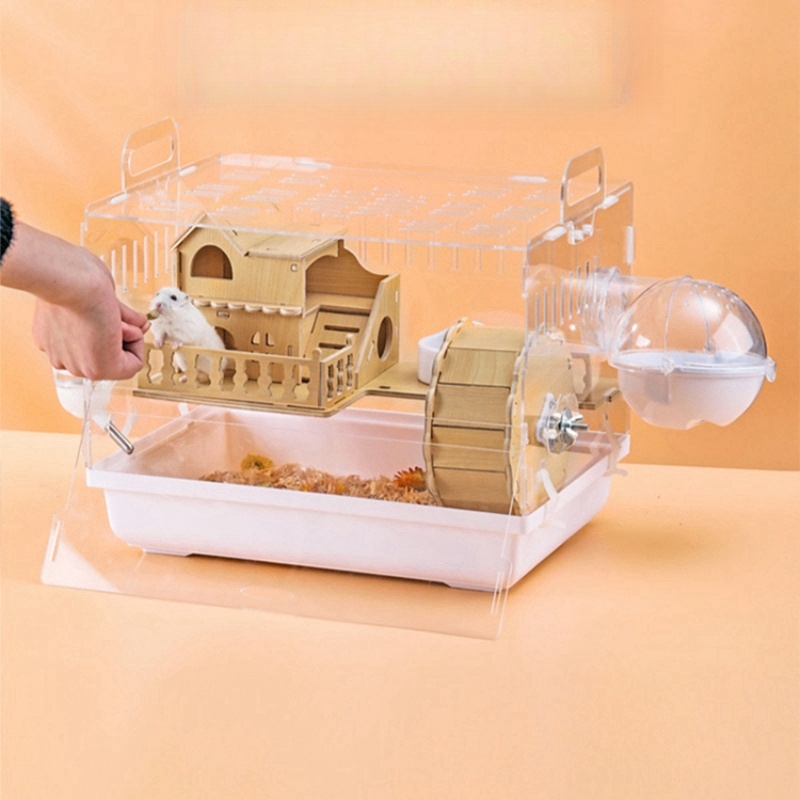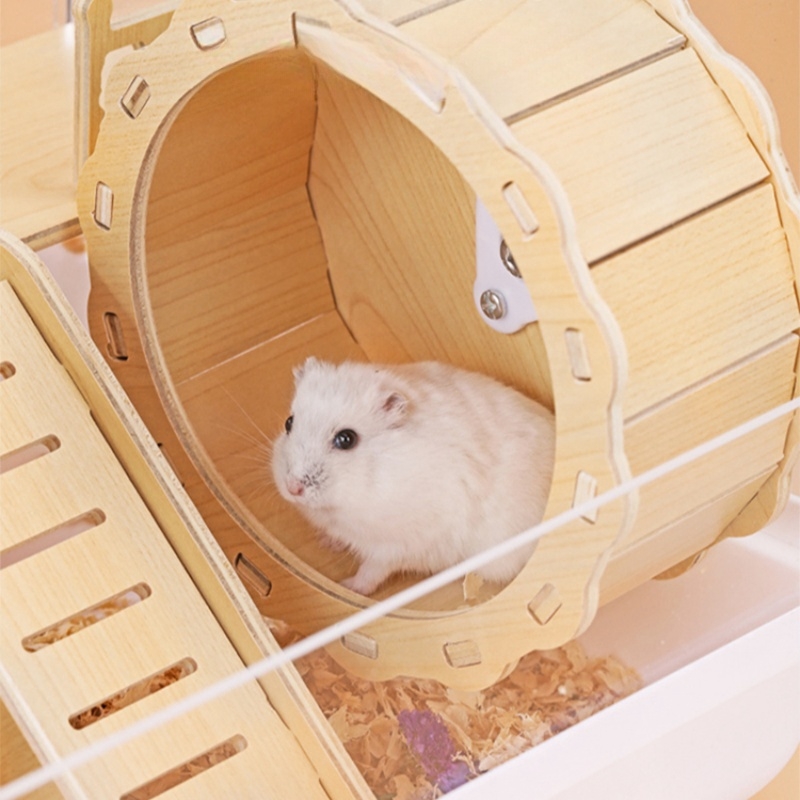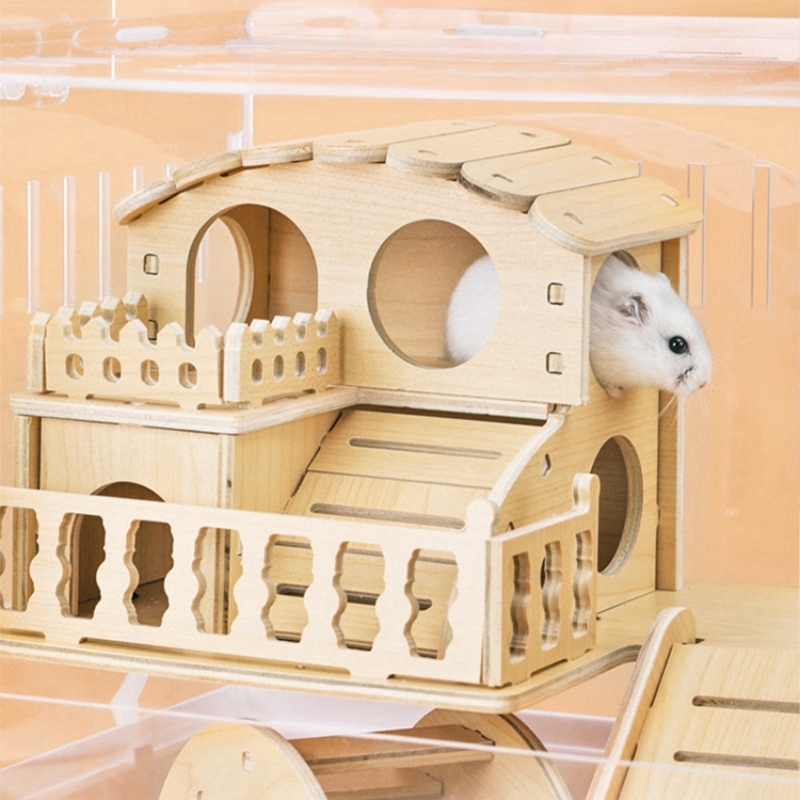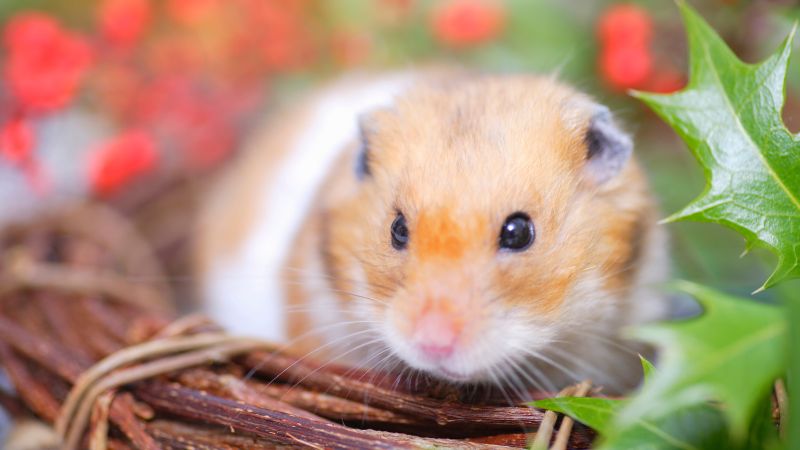
Can You Travel with a Hamster? A Comprehensive Guide
Traveling with a pet hamster isn’t as straightforward as it might seem. It requires careful consideration of your pet’s safety, comfort, and the logistics involved.

Keeping pet hamsters can be a fun and rewarding experience for both children and adults alike.
However, one of the biggest concerns hamster owners have is making sure their furry friend doesn’t escape from its cage. A hamster on the loose can get into all sorts of trouble, not to mention it is nearly impossible to catch!
That’s why it’s so important to take precautions and properly hamster-proof your cage. With the right setup and preventative measures, you can ensure your hamster stays safe and secure inside its home.
In this blog post, we’ll go over some easy tips and tricks for escape-proofing your hamster’s abode.

Traditional wire hamster cages may look cute but they are notorious for being easy to escape from. Your hamster’s best bet is a tank or aquarium made of glass or plastic with a secure, well-ventilated lid. These enclosures have smooth sides that are impossible to climb and are much more escape-resistant.
Aim for a large tank that’s at least 24″ x 12″ in floor space – bigger is always better for hamsters! Make sure the lid fits tightly with no gaps. Some lids have latches for extra security.
Consider getting a 40-gallon breeder tank or larger for your hamster to give them plenty of floor space to run around and burrow while also minimizing escape risk.
Your choice of cage lining can surprisingly make a difference in preventing breakouts. Avoid loose substrates like wood shavings, as hamsters may try to tunnel underneath and work their way out.
Instead, line the cage bottom with solid materials like recycled paper bedding or aspen. You can also use cage liners made of fabric specifically designed for small pets.
Paper-based bedding tends to be the most secure option. Stay away from fluffy cotton nesting materials as well, as hamsters can hide and burrow in these materials.
Change the lining frequently, at least weekly, to prevent burrowing underneath. Spot clean daily and remove soiled areas. The cleaner the cage, the less likely your hamster will be motivated to escape from its environment.
If your glass tank didn’t come with a lid, opt for a wire mesh topper. Get one that is sturdy and fits the tank dimensions exactly with no extra space. Make sure the wire holes are too small for even a baby hamster to squeeze through.
You can easily make DIY wire mesh lids at home with hardware cloth from the hardware store. Just cut to size and use zip ties to hold onto the tank. Check for any sharp edges and file them down so your hamster doesn’t get injured. Avoid wire lids with bigger bar spacing that could allow small paws and noses to fit through.
Houdini hamsters are infamous for somehow lifting up cage lids and making a run for it. Prevent this by weighing down the tank or aquarium topper so it can’t be moved.
Place heavy objects like books, rocks, or ceramic plant pots around the edges of the lid or tank rim. You can also use strong binder clips, luggage straps, or even Velcro strips to clamp the lid down tightly to the sides. Just don’t make it so heavy that the lid is completely sealed and air can’t circulate. Make sure your hamster can still breathe fresh air.
Letting your hamster roam around outside its cage is great—but only if it’s inside a fully secured play area. Never let your hamster freely run loose in a room.
Get a large plastic playpen to set up for daily exercise and playtime. Look for tall sides (at least 2 feet high) so your hamster can’t climb out. You can also use a plastic wading pool placed in a bathtub as a makeshift play area. Avoid playpens with bars or mesh that clever hamster paws and teeth may be able to gnaw through.
Always supervise playtime 100% and never step away. Have an escape plan ready just in case, like keeping a bucket or box handy to quickly scoop up and contain the hamster. Restrict play time to a single hamster-proofed room with doors closed.
Carefully inspect the inside and outside of the cage to look for possible escape routes. Any small openings or gaps in the tank seams or lid can act as a doorway to freedom. Check where accessories like water bottles and food bowls are attached to make sure there are no gaps.
Plug up holes with aquarium-safe silicone. Metal screen strips are handy for covering seams or damaged areas. Make sure wheel axles are securely attached to the outside only. Look for any compromised corners or thin spots your hamster could chew through over time.

For extra protection, install multiple cage locks on your hamster’s habitat. Hook-and-eye latches, padlocks and snap locks are available at pet stores to keep the cage door tightly closed.
Child-proof latches are another good option to prevent kids from accidentally leaving the cage open. Place locks on each side of the tank or lid to fully hamster-proof. Test the locks periodically and replace them as needed if they become loose or damaged. Combination or key locks add extra security.
When your hamster is out playing in its pen or exercise ball, make sure to always supervise directly. Keep a close eye on your pet at all times to ensure it stays safe and doesn’t suddenly make a run for it. Don’t let your hamster out of sight, even for a minute.
It’s also smart to hamster-proof the room by blocking all hiding spots and under-furniture areas with cardboard or other barriers. Close doors and windows so it can’t escape if it does get loose. Do not interact with your hamster near open doors or while holding objects it could leap onto.
Don’t let things like dirty bedding or overgrown nails turn your hamster cage into an appealing escape route. Perform thorough cleanings weekly and trim your hamster’s nails monthly.
Check the cage frequently for damage that could allow escaping and make repairs right away. Also, remove uneaten fresh foods within 24 hours that could rot and motivate your hamster to flee the unpleasant smell. Make sure to replace worn accessories like chew toys before they turn into escape tools.
No matter how careful you are, sometimes hamsters manage to outsmart their owners and escape! Be prepared for this scenario by setting up a spare backup cage in advance. This gives you a place to temporarily house your hamster if it does get out while you reinforce the primary cage’s security.
A simple plastic carrier or travel cage with bedding, food and water will work in a pinch. Having a backup prevents an extended loose hamster situation while you deal with an escape.
For the ultimate escape protection, use a cage designed specifically to prevent breakouts by clever hamsters. Double cage setups utilize two cages connected by tubes.
The main cage has all your hamster’s food, wheels, accessories, etc. Then a second, empty cage is attached, with the only access point between the two cages being through the connecting tube.
If your hamster does manage to escape its main cage, it will still be securely contained in the attached secondary cage. This fail-safe system ensures your hamster has free range of its habitat while eliminating the chance of a total jailbreak.
For wired cages, ensure escape attempts are foiled from the get-go by choosing a cage with a metal or aluminum base. Don’t use cages that have a plastic base, as determined rodent teeth will eventually chew right through it.
Metal cage bases prevent burrowing underneath from inside the cage. For extra protection, you can place wired cages inside a plastic tank base to create a robust double barrier.

While no cage may be 100% escape-proof, there are many precautions you can take to make it extremely difficult for your hamster to break out. With the right enclosure type, secure lid, supervised playtime, and proper maintenance, you can help your hamster stay safe and sound.
Keeping a close eye on your mischievous pet and acting quickly when you spot potential escape routes will also go a long way. With a little hamster-proofing effort, both you and your furry friend will avoid the headache and heartbreak of an escaped hamster on the run!


Traveling with a pet hamster isn’t as straightforward as it might seem. It requires careful consideration of your pet’s safety, comfort, and the logistics involved.

Finding the best hamster cage for Syrian hamster is crucial, as these curious, low-maintenance, and independent pets thrive in the right environment. The primary concern

When I began, the task of selecting essentials for a natural hamster habitat was daunting. To ease this process, I’ve assembled an exclusive set of

Have you ever wondered, “Are hamsters happier in bigger cages?” Generally YES. It’s a question that might seem straightforward, but there’s more to it than

Traveling with a pet hamster isn’t as straightforward as it might seem. It requires careful consideration of your pet’s safety, comfort, and the logistics involved.

Finding the best hamster cage for Syrian hamster is crucial, as these curious, low-maintenance, and independent pets thrive in the right environment. The primary concern

When I began, the task of selecting essentials for a natural hamster habitat was daunting. To ease this process, I’ve assembled an exclusive set of

Have you ever wondered, “Are hamsters happier in bigger cages?” Generally YES. It’s a question that might seem straightforward, but there’s more to it than
Copyright © 2025 woodhamstercage. All Rights Reserved.